CALCULATEDRISK
By Bill McBride
This 2-part overview for mid-March provides a snapshot of the current housing market.
Inventory, inventory, inventory! Inventory usually tells the tale. Currently I’m watching months-of-supply closely.
New Listings for Existing Homes Up Year-over-year in February
Realtor.com reports in February 2025 Monthly Housing Market Trends Report that new listings were up 5.1% year-over-year in February. However, new listings are still well below pre-pandemic levels.From Realtor.com:
On the bright side, sellers increased their activity this February as newly listed homes were 5.1% above last year’s levels. However, this is a decrease from January’s rise of 10.8%. This puts new listing activity at its highest February level since 2021. While rates remain elevated, we might be seeing that chiseling effect starting as sellers may grow tired of waiting for significant changes in rates.
And active listings were up 27.5% year-over-year.
There were 27.5% more homes actively for sale on a typical day in February compared with the same time in 2024, marking the 16th consecutive month of annual inventory growth. This is an increase from January, which was up only 24.6% year over year. However, while inventory this February continues to improve, it is still down 22.9% compared with typical 2017 to 2019 levels.
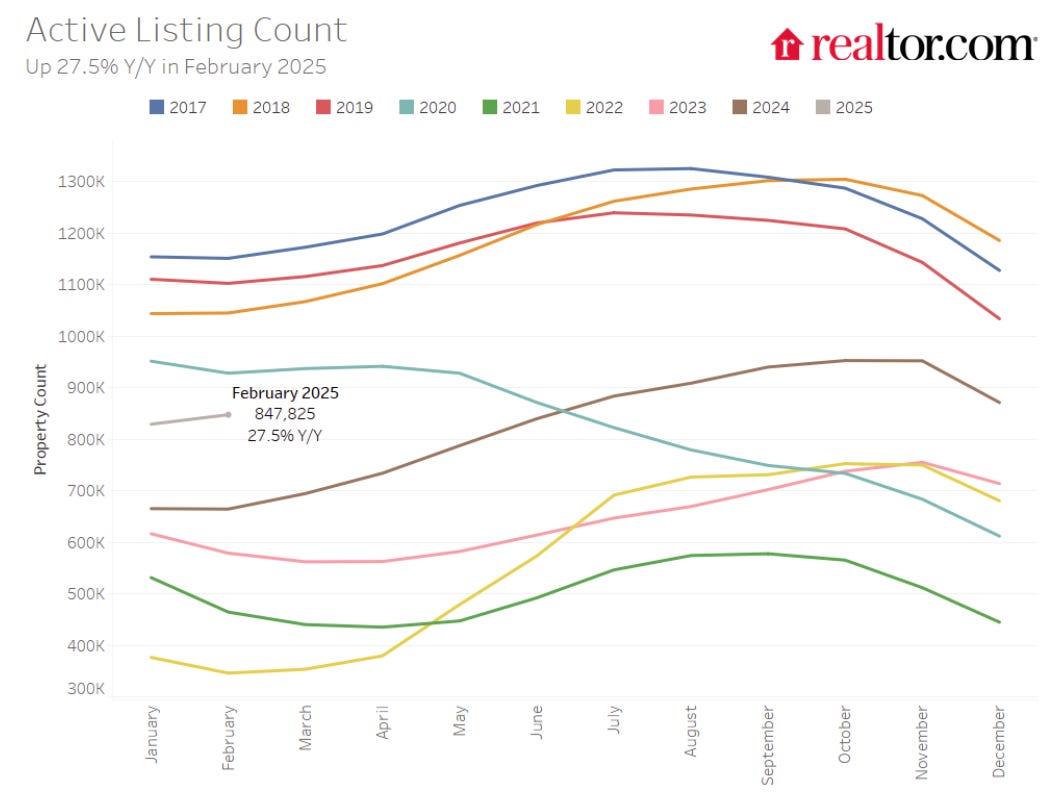
Note the seasonality for active listings. The next few months will be the key for inventory
The following graph shows the seasonal pattern for active single-family inventory since 2015 through March 7, 2025, from Altos Research. The red line is for 2025. The black line is for 2019.
Inventory was up 28.3% compared to the same week in 2024 (last week it was up 28.3%), and down 21.4% compared to the same week in 2019 (last week it was down 21.8%).
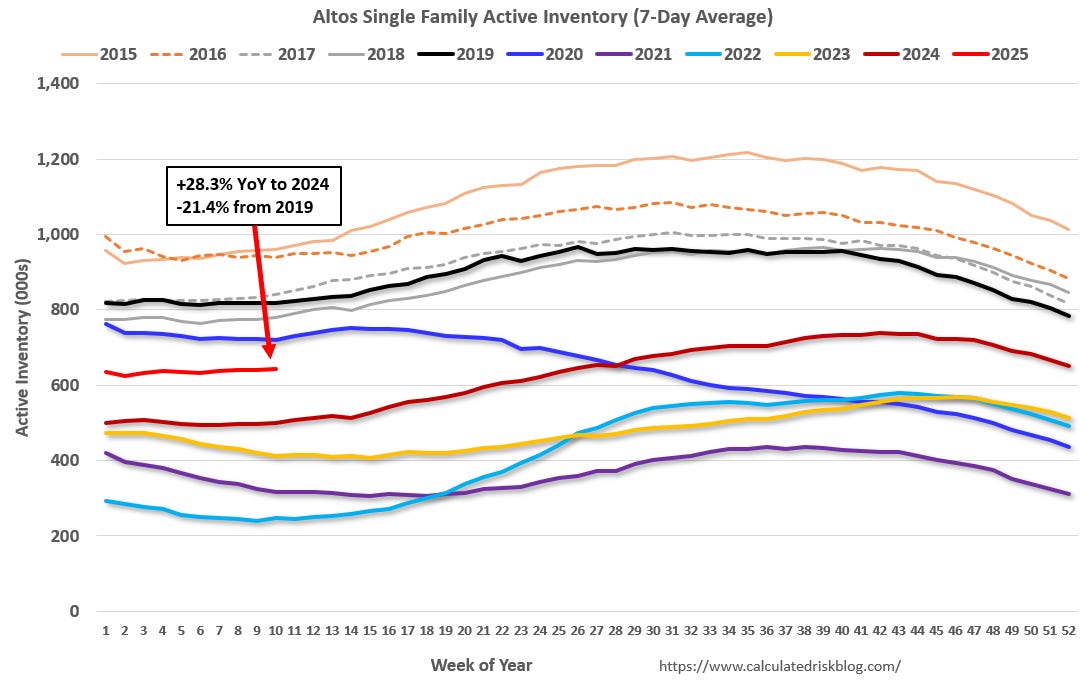
The gap to more normal inventory levels is closing, but inventory is still well below pre-pandemic levels nationally.
Months-of-Supply
Since both inventory and sales have fallen significantly, a key for house prices is to watch months-of-supply. The following graph shows months-of-supply since 2017. Note that months-of-supply is higher than 6 of the last 8 years, and at the same level as in 2017.
Months-of-supply was at 3.5 months in January 2025, up from 3.0 months in January 2024, and down from 3.8 months in January 2019. Note that December and January usually have the lowest months-of-supply.
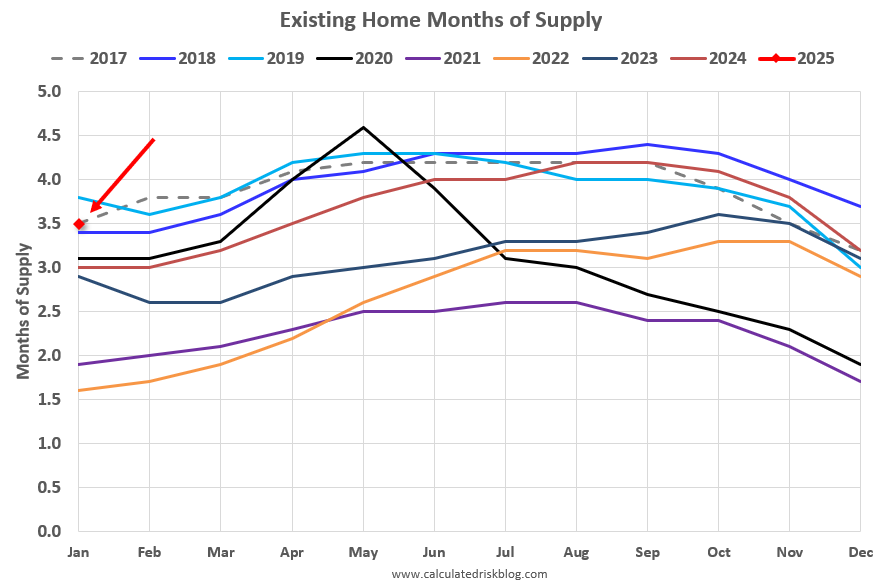
This suggests that year-over-year price growth will continue to slow. Inventory would probably have to increase to 5 1/2 to 6 months of supply to see national price declines again.
In 2022, we saw some price declines at the National level even with fairly low months-of-supply – probably due to the sharp increase in inventory and some sellers panicking while remembering the housing bust!
There are significant regional differences in months-of-supply. Here is a table of the local markets I follow for January 2024:
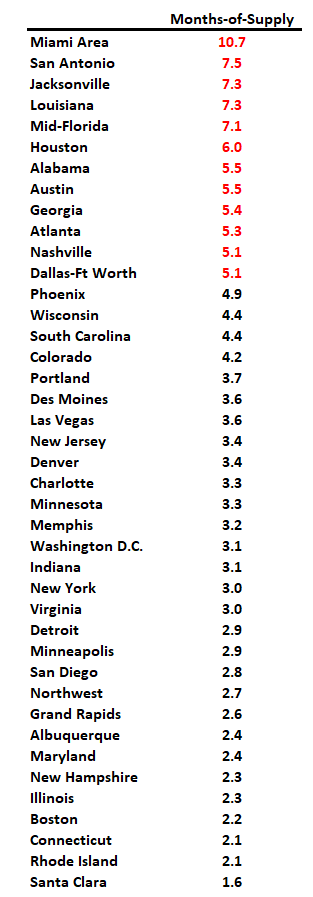
Areas with months-of-supply above 6 will see price pressures. All of the areas with months-of-supply at 5+ months in January will likely be pushing or exceeding 6 months during the summer months. Florida and Texas are the most at risk states for price declines in 2025.
5 Months of New Home Unsold Inventory Under Construction; 2.1 Months Completed Supply
For new homes, there are 5.0 months of homes are under construction (blue line below) – generally declining, but still well above the normal level. There are 2.1 months of completed supply (red line). This is above the normal level.
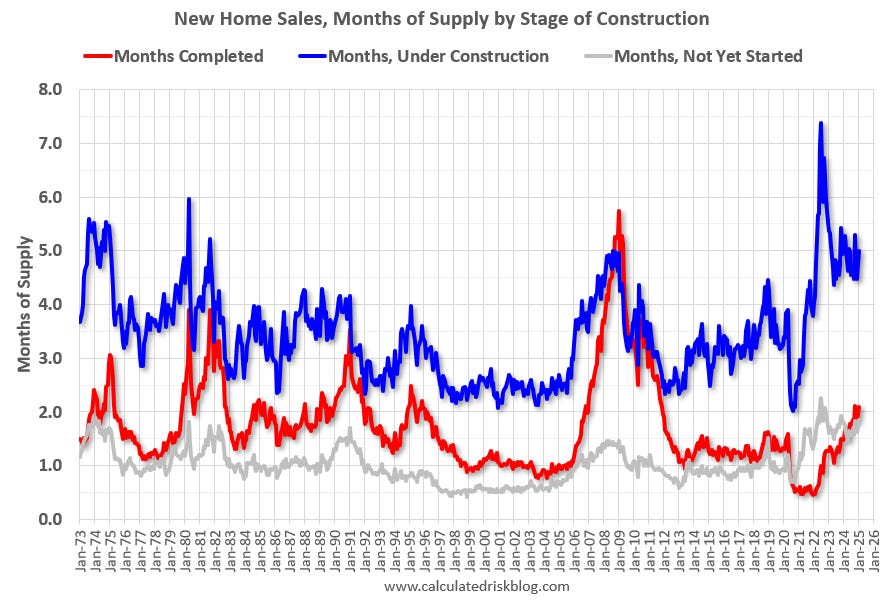
New home inventory, as a percentage of total inventory, is still very high. The following graph uses Not Seasonally Adjusted (NSA) existing home inventory from the National Association of Realtors® (NAR) and new home inventory from the Census Bureau (only completed and under construction inventory).
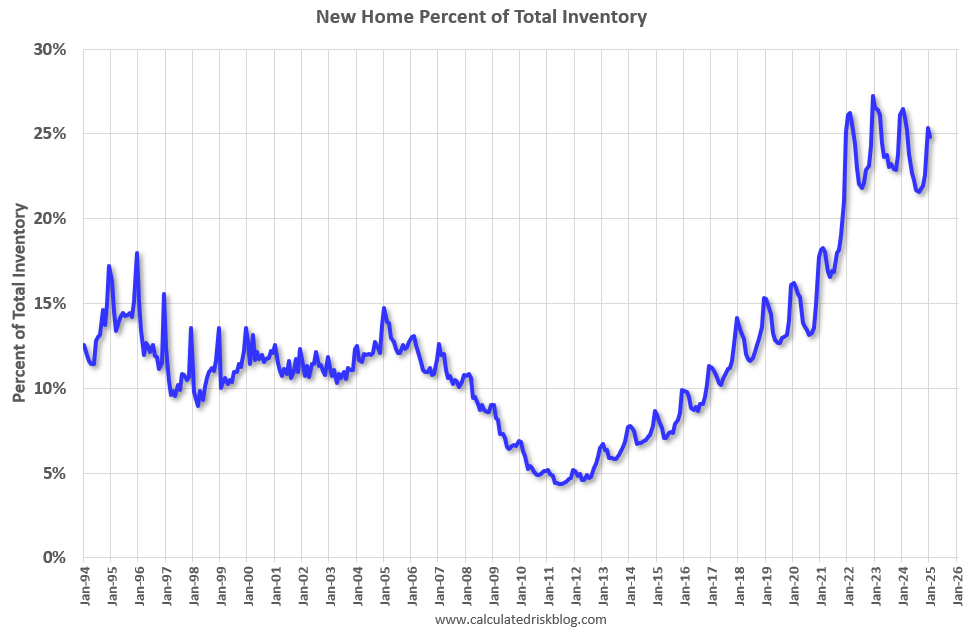
It took a number of years following the housing bust for new home inventory to return to the pre-bubble percent of total inventory. Then, with the pandemic, existing home inventory collapsed and now the percent of new homes is 24.8% of the total for sale inventory, down from a peak of 27.2% in December 2022.
The percent of new homes of total inventory should continue to decline as existing home inventory increases.However, the percent of new home inventory has increased seasonally over the Winter as existing homes were withdrawn from the market.
And for housing starts there are still an above normal number of multi-family housing units under construction, and 1.409 million total units under construction. However, multi-family housing units under construction is now declining rapidly.
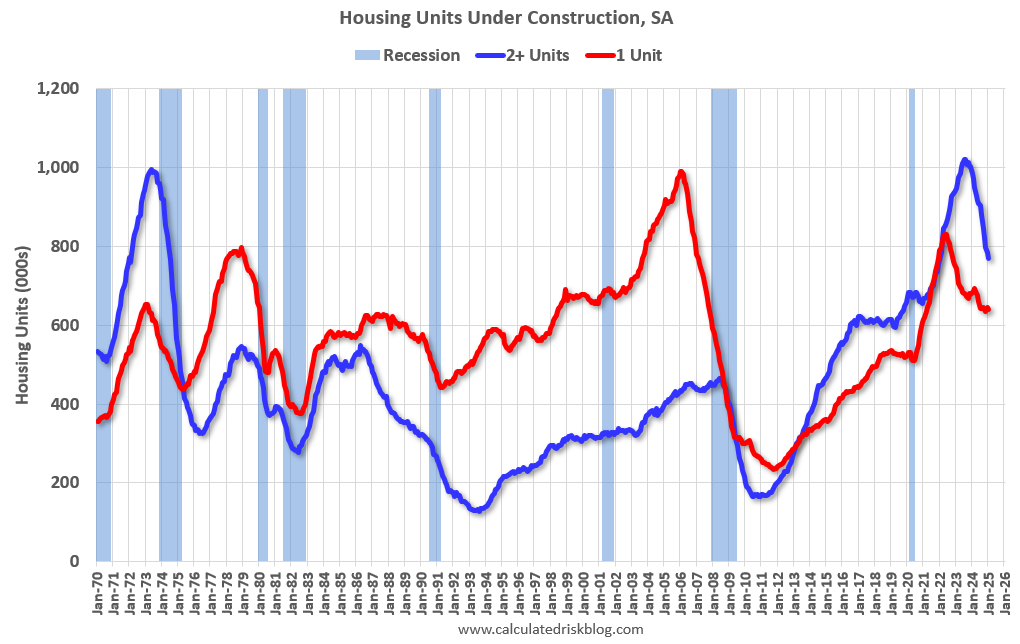
Currently there are 641 thousand single family units (red) under construction (SA). This was down slightly in January compared to December, and 189 thousand below the pandemic peak in May 2022. Currently there are 768 thousand multi-family units (blue) under construction. This is 253 thousand below the record set in July 2023 of 1,021 thousand.
Combined, there are 1.409 million units under construction, 302 thousand below the all-time record of 1.711 million set in October 2022 and the fewest since July 2021.
For comparison, in the three years prior to the pandemic, there were about 1.1 to 1.2 million housing units under construction – so the current level is still historically high.
Sales
The NAR reported sales were at a “seasonally adjusted annual rate of 4.08 million in January” As expected, existing home sales were up year-over-year for the fourth consecutive month, after being down year-over-year every month since 2021. This was a combination of weak sales in January 2024 and lower mortgage rates in November and December when contracts were signed (Existing home sales are reported at closing).
Early local market reports suggest existing home sales will likely be down year-over-year in February.
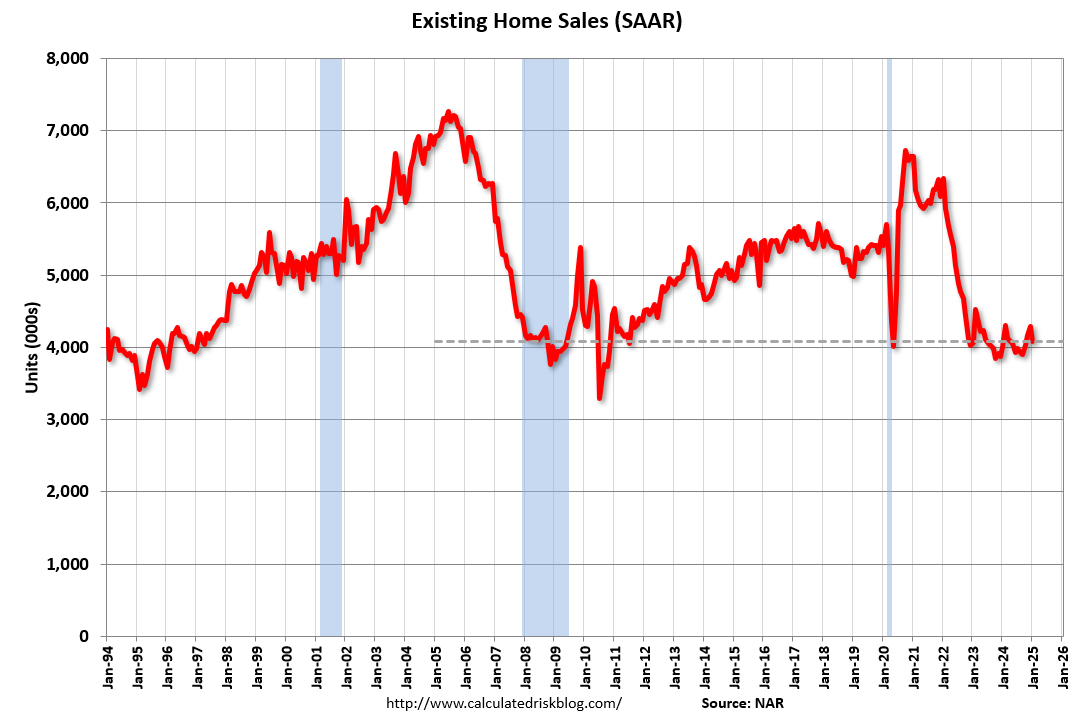
And for new home sales, the Census Bureau reported “Sales of new single-family houses in January 2025 were at a seasonally adjusted annual rate of 657,000”, down 1.1% YoY from January 2024.
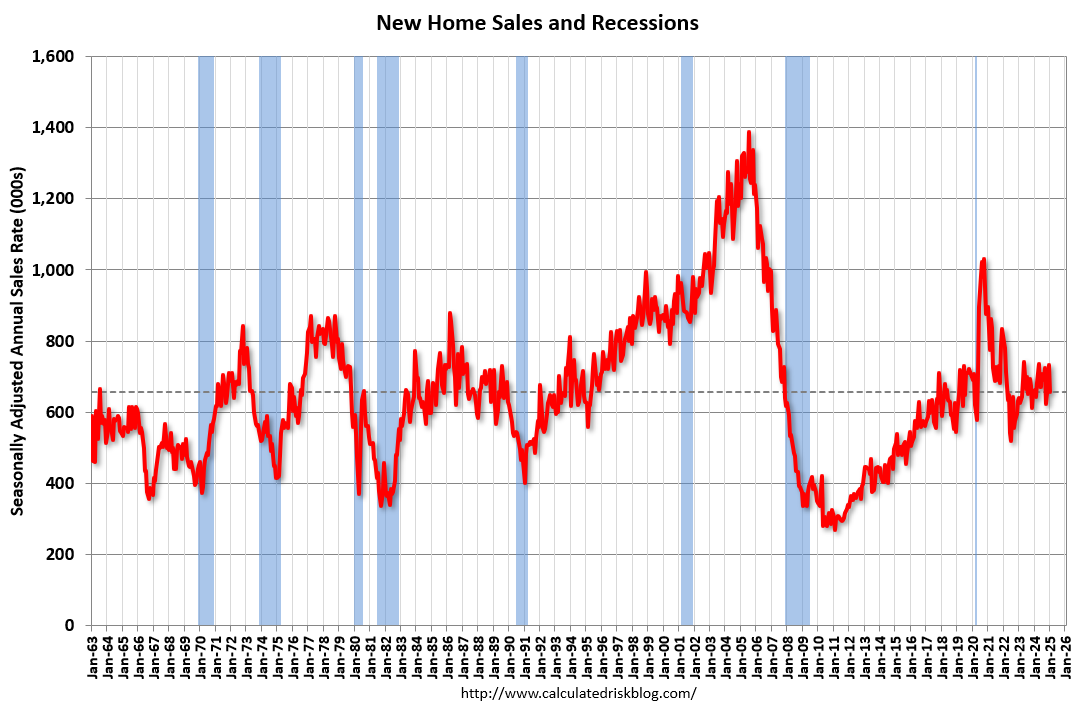
New home sales bottomed in July 2022 and new home sales have held up better than existing home sales due to the lack of existing home inventory and the lack of distressed sales this cycle – and new home builders have used various tools to attract buyers such as mortgage rate buydowns.
However, existing home inventory is increasing, and construction costs are rising, so the story for the homebuilders is changing.
A key for house prices will be to watch existing home months-of-supply!
In Part 2, I’ll review house prices, rents, mortgage rates, and more.
